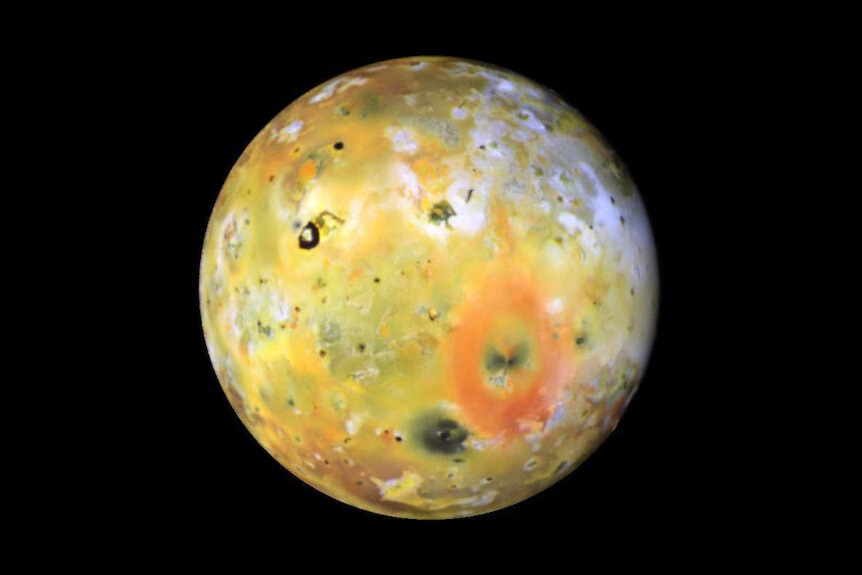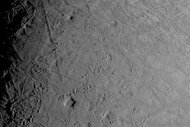Create a free profile to get unlimited access to exclusive videos, sweepstakes, and more!
NASA Ending 2023 with a Close Flyby of Jupiter's Volcanic Moon Io
The New Year party on Io is getting hot!
Volcanoes have long been a source of wonder, awe, and horror. Inside volcanoes, we can glimpse the beating heart of our living planet, but those glimpses come at a cost, and volcanoes don’t spare one single concern for human baggage. That is demonstrated destructively in the 2019 disaster flick Ashfall (streaming now on Peacock), in which the eruption of the active volcano Paektu Mountain sets off a series of apocalyptic events along the China-North Korea border.
The combination of volcanic eruptions and related earthquakes plunges the Korean peninsula into chaos, but even our most nightmarish natural disasters pale in comparison to the volcanic wasteland that is Jupiter’s moon Io (pronounced eye-oh). Now, NASA is sending it’s Juno spacecraft to scope out the most volcanic world in the solar system.
NASA's Juno Spacecraft is Getting Up Close and Personal with Jupiter's Moon Io
Juno launched on August 5, 2011, and spent nearly five years plodding across interplanetary space to Jupiter. It arrived in the Jovian system on July 5, 2016, and it’s been whizzing around our system’s largest gas giant and its moons ever since.
RELATED: Just in Time for Halloween, NASA’s Juno Mission Glimpses Horrifying “Face” on the Surface of Jupiter
Over the last seven years, Juno has made a total of 56 flybys of Jupiter and the ceiling fan shaped spacecraft is readying for its 57th, which will take it closer to Io than any spacecraft has been in over 20 years. During Juno’s mission it has studied Io (along with a number of Jupiter’s other moons), but always from the middle distance, between 11,000 kilometers (6,830 miles) and 100,000 kilometers (62,100 miles). When Juno swoops down on December 30, 2023, it will fly just 1,500 kilometers (930 miles) above Io’s surface. Juno will then make another close flyby on February 3, 2024, at approximately the same altitude.
“With our pair of close flybys in December and February, Juno will investigate the source of Io’s massive volcanic activity, whether a magma ocean exists underneath its crust, and the importance of tidal forces from Jupiter, which are relentlessly squeezing this tortured moon,” said Juno’s principal investigator Scott Bolton, in a statement.
During those flybys, all three of Juno’s imaging instruments – the Jovian Infrared Auroral Mapper (JIRAM) which captures heat signatures from the surface of a planet or moon, the Stellar Reference Unit which helps with spacecraft positioning, and the JunoCam visible light imager – will be active and collecting data. Juno should return a mountain of data about the hellish environment on Io, illuminating some of the extremes that are possible not just in the wider cosmos but right here in our own backyard.
In order to get Juno into position, flying low over Io, mission controllers had to adjust the spacecraft’s trajectory into a more favorable orbit. That means that Juno will continue to orbit Io for the remainder of its extended mission. After these two close passes, the spacecraft will continue to fly by Io on every subsequent orbit. That orbit, however, will degrade fairly rapidly, pushing the spacecraft farther and farther away from the surface. By the time it reaches the last of its 18 passes over Io, Juno will be at an altitude of roughly 115,000 kilometers (71,450 miles).
Violent volcanic eruptions on Earth are the sorts of things you make blockbuster movies about, but on Io it’s just an ordinary day when the lava flows.
See what happens when the world ends in Ashfall, streaming now on Peacock.

















